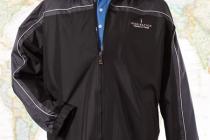How To Travel with your CPAP Machine
Millions of Americans have found an unusual but effective key to a good night’s sleep. Continuous positive airway pressure machines (or CPAP machines) are more common now than ever. These small, bedside gadgets address problems like sleep apnea by sending pressurized air into the nose. They ensure the wearer gets a good night’s sleep and that their roommates aren’t disturbed by snoring.
One question we routinely get is, ‘How do I travel with my CPAP machine?’ We’ve compiled a few helpful tips for those traveling with this medical device:
Travel Form We request that cruise passengers on Holland America Line complete a Special Requirement Information form whenever they have a significant medical condition. For passengers on tours or other cruise lines, notify one of our Reservation Coordinators and we'll make sure your needs are anticipated on each step of the journey.
Water Good news! While distilled water extends the life of your equipment, you don’t need to worry about using it during your trip. The American Sleep Apnea Association has stated that using bottled (or even tap) water for brief periods of time will not harm your water chamber—nor will it harm you.
Packing The TSA suggests packing your machine in the center of your checked luggage, surrounded by plenty of soft clothing. This prevents it from getting left behind or dropped at the airport. However, many prefer to carry it on the plane with them to negate the possibility of becoming separated from it should their checked bag be delayed. If you bring your machine as a carry-on, make sure it’s secured in a well-padded carrying case and placed within a clear plastic bag to keep contaminants out.
Boarding First, note that a CPAP machine should not count as your carry-on luggage under the Americans with Disabilities Act. However, juggling your machine, a separate carry-on bag plus a personal item makes boarding a challenge, so try to pack the machine within your carry-on bag. Regardless, you will want to have a medical equipment tag that identifies the machine as a necessary medical device.
Hardware While most machines are far lighter than they once were, frequent travelers may want to look into a travel-specific CPAP machine. Be sure to bring an electrical adapter and/or converter for foreign countries. Also consider bringing a back-up battery pack and extra mask cushions. Generally, CPAP users on overnight flights choose to go without using their machines for one night due the inconvenience. If you would prefer to use yours, make sure to check with your airline at least 48 hours in advance to confirm your model meets the FAA requirements and is approved for in-flight use.
Security To protect the sterility of your machine, place it inside a clear plastic bag before you reach the security checkpoint. Tell the TSA agent that you have a CPAP machine—they will be familiar with it—and make sure he or she puts on new gloves before handling it. You may need to remove the machine from its case during screening, though you can leave its tubing and breathing mask inside. If necessary, ask that they use a fresh explosive detection swab on your machine to prevent accidental cross-contamination.
Paperwork When passing through security, it may also help (but is not required) to bring a doctor’s note of necessity, written on their letterhead, explaining the need for the device. When traveling internationally, you may also want to bring your original prescription in case you the machine has to be replaced overseas. As with all your belongings, it’s a good idea to label them so they can be identified and returned to you if lost.
For those who suffer from sleep apnea, a CPAP machine can be a life-changer. Christian travel offers a different kind of transformation, and we want to make sure you are well-rested so that you can fully experience its benefits. If you have questions about traveling with a CPAP machine, please let us know!






